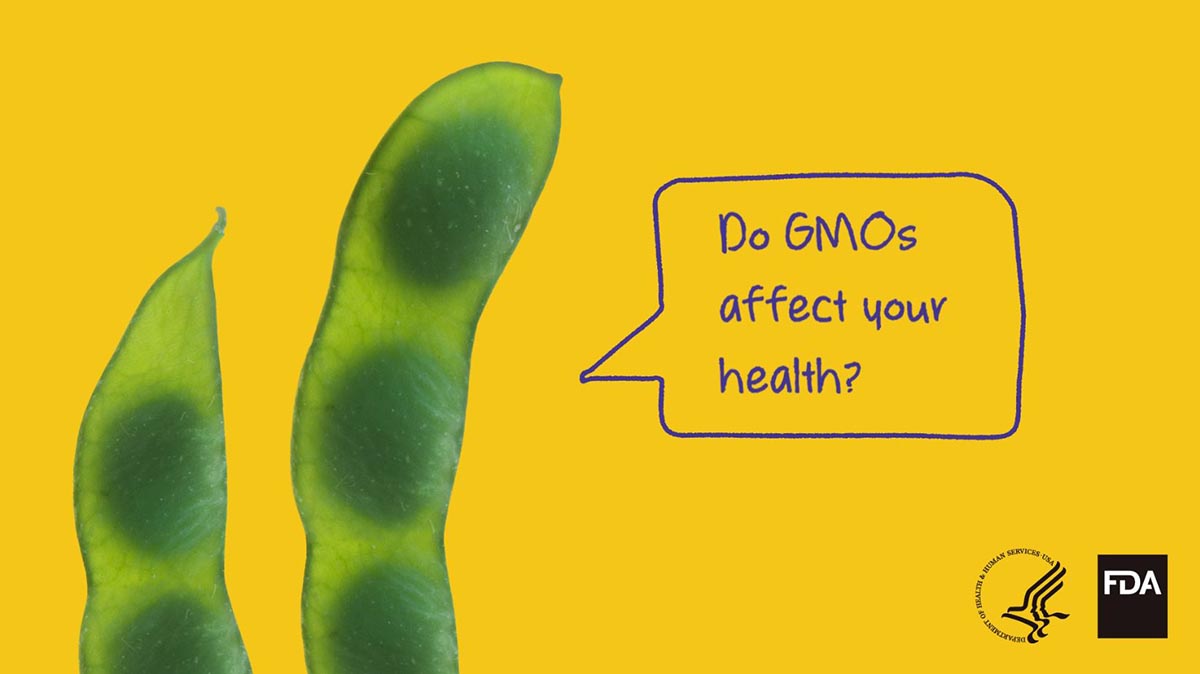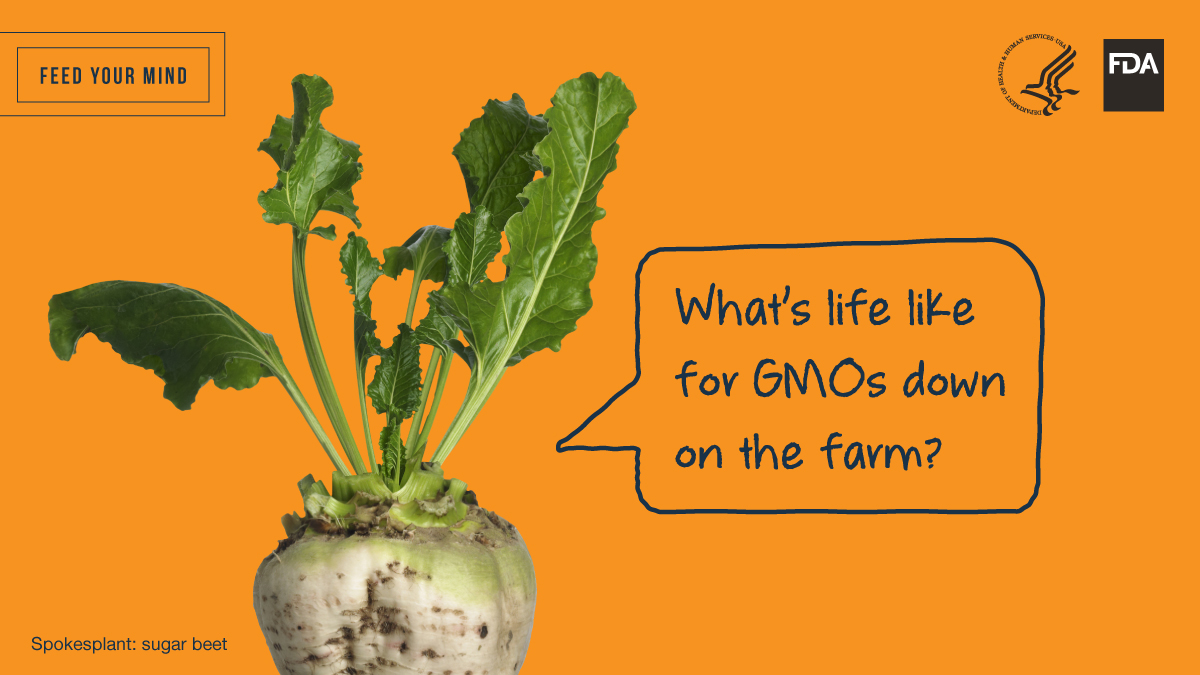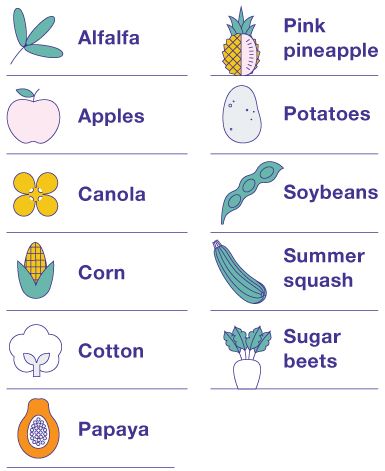Spread the Word About Feed Your Mind: Stakeholder Toolkit
The Feed Your Mind initiative offers science-based, plain-language information in the form of web content, fact sheets, infographics, and videos that you can share with your constituents, members, partners, and other stakeholders to increase their knowledge and understanding of GMOs.
Help spread the word about the U.S. Food and Drug Administration’s (FDA’s) Feed Your Mind initiative by using the sample newsletter and website content, social media posts, images, videos, and educational resources below.
Note: To use the images shown below, copy and paste or right-click on the image and save to your computer.
Initiative Overview
GMO foods have been available since the early 1990s, but there is some confusion around what GMOs are. The U.S. Food and Drug Administration’s (FDA) Agricultural Biotechnology Education and Outreach Initiative aims to increase the awareness and understanding of genetically engineered foods, commonly known as GMOs.
FDA encourages you to feed your mind with science-based resources including webpages, fact sheets, infographics, and videos developed in collaboration with the U.S. Department of Agriculture (USDA), and U.S. Environmental Protection Agency (EPA).
Feed your mind with more GMO knowledge at www.fda.gov/feedyourmind.
Additional Information
- Feed Your Mind materials are based on extensive formative research. To guide development of the initiative, FDA, USDA, and EPA:
- Sought input from stakeholders through two public meetings;
- Opened a docket to receive public comments;
- Conducted more than 40 focus groups comprised of participants representing the diverse backgrounds of consumers across the country; and
- Consulted experts in agricultural biotechnology, education, and communication.
- Feed Your Mind features a wide range of resources designed specifically for consumers, healthcare professionals, and students. These materials feature web content, fact sheets, and videos using common language, engaging graphics, and stories to provide information about genetically engineered foods, including information about the history of genetic modifications in agriculture.
- Additional materials such as a supplementary science curriculum for high schools and middle schools and a continuing education program for dietitians are also available. The curricula were released in 2020 and the continuing education program for dietitians was released in 2022
Key dates for genetic modification: From ancient history to the dawn of the 21st century.
https://www.fda.gov/food/agricultural-biotechnology/science-and-history-gmos-and-other-food-modification-processes #FeedYourMind
Grow more food on less land: that’s one reason we have GMOs. Any other reasons? www.fda.gov/feedyourmind #FeedYourMind
What is it about GMOs that can help farmers improve soil health?
https://www.fda.gov/food/agricultural-biotechnology/how-gmo-crops-impact-our-world #FeedYourMind
#GMO foods are just as safe to eat as their non-GMO counterparts. Find more answers to your questions about GMOs. www.fda.gov/feedyourmind #FeedYourMind
Did you know that some #GMO plants are used to make ingredients for other food products?
https://www.fda.gov/food/agricultural-biotechnology/gmo-crops-animal-food-and-beyond #FeedYourMind
See what #GMOs make the journey from farm to table. And learn more about how they are a big part of our food supply.
https://www.fda.gov/food/agricultural-biotechnology/gmo-crops-animal-food-and-beyond #FeedYourMind
#Nutritionists & #Dietitians: Earn free continuing professional education units by learning from #GMO experts.
https://www.fda.gov/food/healthcare-professionals/agricultural-biotechnology-continuing-education-program #FeedYourMind
Most GMO crops grown today were developed to help farmers prevent crop loss. Learn about the most common traits found in GMO crops at this new website from FDA: www.fda.gov/feedyourmind.
Most GMO crops grown in the U.S. are used in food for animals. Find out more about how #GMO crops are used at FDA’s new website: www.fda.gov/feedyourmind.
A GMO is a plant, animal, or organism that has had its DNA changed. Learn more about GMOs with FDA’s #FeedYourMind initiative at www.fda.gov/feedyourmind.
Are you familiar with the term GMO? Did you know there are other words used to describe these products? Find out what they are: www.fda.gov/feedyourmind.
GMOs, Farm to Table
GMOs and Food Safety: A Guide for Health Educators
Why do we have GMOs?
Do GMOs Affect Your Health?
What GMO Crops Are Grown and Sold in the U.S.?
What Kinds of Genetic Modifications Are There?
How Are GMO Plants Made?
Is It Called GMO or Something Else?
Talk About GMOs: Experts Who Know Them and Grow Them
GMOs: Government Regulation and Your Safety
Agricultural Biotechnology Translated Videos
The U.S. Food and Drug Administration in collaboration with the Academy of Nutrition and Dietetics has developed a continuing education program about genetically engineered foods, also known as GMOs, for registered dietitians (RDs)/registered dietitian nutritionists (RDNs) and nutrition and dietetics technicians, registered (NDTRs). The program includes a presentation by four experts and a companion education material. Interested RDs/RDNs and NDTRs can earn free continuing education units at the Academy of Nutrition and Dietetics’ EatRight® Store.
Understanding GMOs
Understanding GMOs Fact Sheet
English
- Where Can You Find GMOs?
- A Question of GMOs: A Discussion Guide for Health Educators
- GMOs 101: Your Basic Questions Answered
- GMOs and Your Health
- What GMO Crops Are Grown and Sold in the U.S.?
- How GMOs Are Regulated for Food and Plant Safety in the United States
- A Timeline of Genetic Modification in Modern Agriculture
- How Are GMOs Made?
- Types of Genetic Modification for Crops
- Why Do Farmers in the U.S. Grow GMO Crops?
- GMO Crops and Humanitarian Reasons for Development
- GMO Crops and Food for Animals
- Genome Editing
- GMOs and the Environment
- GMOs Outside the U.S.: A Closer Look at Bt Eggplant
en Español (Spanish)
- Principios básicos de los OGM: Respuestas a Preguntas Básicas
- Los OGM y Su Salud
- ¿Cuáles OGM se Cultivan y Venden en Los Estados Unidos?
- Cómo se Regulan Los OGM Para la Seguridad Alimentaria y Vegetal En Los Estados Unidos
- Una Línea de Tiempo de la Modificación Genética en la Agricultura Moderna
- ¿Cómo se crean los OGM?
- Tipos de métodos de modificación genética para cultivos
- ¿Por qué los agricultores de EE. UU producen cultivos OGM?
- Cultivos OGM y razones humanitarias para el desarrollo
- Cultivos OGM y Alimentos para Animales
- Edición del Genoma
- Los OGM y el Medio Ambiente
- Los OGM Fuera de EE. UU.: Un Análisis Detallado de la Berenjena Bt
简体中文 (Simplified Chinese)
- 哪里可以找到转基因食品? (Where Can You Find GMOs?)
- 转基因生物简介: 基本问题解答 (GMOs 101: Your Basic Questions Answered)
- 转基因食物 与人体健康 (GMOs and Your Health)
- 转基因生物是 如何制造的? (How Are GMOs Made?)
- 作物基因改良 方法的类型 (Types of Genetic Modification for Crops)
- 美国的农民为什么 种植转基因作物? (Why Do Farmers in the U.S. Grow GMO Crops?)
- 本着人道主义的初 衷研发转基因作物 (GMO Crops and Humanitarian Reasons for Development)
- 转基因作物与 动物饲料 (GMO Crops and Food for Animals)
Navajo
- Where Can You Find GMOs?
- GMOs 101: Your Basic Questions Answered
- GMOs and Your Health
- How Are GMOs Made?
- Types of Genetic Modification for Crops
- Why Do Farmers in the U.S. Grow GMO Crops?
- GMO Crops and Humanitarian Reasons for Development
- GMO Crops and Food for Animals
GMO Basics
1. GMO foods have been available since the early 1990s, but there is still some confusion around what GMOs are. The U.S. Food and Drug Administration’s (FDA) Agricultural Biotechnology Education and Outreach Initiative aims to increase the awareness and understanding of genetically engineered foods, commonly known as GMOs. The initiative was developed in collaboration with the U.S. Department of Agriculture (USDA) and the U.S. Environmental Protection Agency (EPA) to provide consumers with science-based information about what GMO foods are available, the environmental impact of GMOs, and the health and safety of GMOs.
- There are GMO plants and animals available in the United States. This includes alfalfa, apples, canola, corn, cotton, papaya, pink pineapple, potatoes, soybeans, summer squash, and sugar beets. A farm raised Atlantic salmon and pork from a type of pig have been approved for food use. But you may not see them in the market because they are not widely available yet. Only a few GMOs are available as fresh foods. Most are used to make ingredients that are then used in other food products like cereal and snack chips.
- GMO foods are as safe to eat as their non-GMO counterparts. Multiple agencies work to make sure GMOs are safe for human, plant, and animal health. Some GMO plants have even been modified to improve their nutritional value. An example is GMO soybeans with healthier oils that can be used to replace oils that contain trans fats.
- GMOs can help farmers grow crops that are resistant to diseases and insects. Humans have used traditional ways to modify crops and animals to suit their needs and tastes for thousands of years. Genetic engineering lets scientists do the same thing faster and more precisely. Results include higher crop yields, less crop loss due to disease and insect damage, longer storage life, better appearance, and better nutrition.
- GMOs can reduce farmers’ use of pesticides. Some GMO plants contain plant-incorporated protectants to make them resistant to insects. This lowers farmers’ need for and use of spray pesticides.
- GMO foods are no more likely to cause allergic reactions than non-GMOs. The way GMOs are created allows scientists to know precisely which new proteins are introduced into a plant. Federal agencies monitor developments carefully so that consumers have the information they need about GMOs and allergies.
2. Who’s Regulating GMOs?
GMO (genetically modified organism) is the common term used to describe a plant, animal, or microorganism that has had its genetic material (DNA) altered through a process called genetic engineering. The U.S. Food and Drug Administration, U.S. Environmental Protection Agency, and U.S. Department of Agriculture work together under the Coordinated Framework for the Regulation of Biotechnology to ensure that GMOs are safe for human, plant, and animal health. These agencies also monitor the impact of GMOs on the environment.
- U.S. Food and Drug Administration (FDA): FDA regulates most foods, including GMO foods. FDA makes sure that foods that are GMOs or have GMO ingredients meet the same strict safety standards as all other foods. FDA ensures that GMO foods are as safe as their non-GMO counterparts.
- U.S. Environmental Protection Agency (EPA): EPA is responsible for protecting human health and the environment, which includes regulating pesticides. EPA regulates the safety of substances that are in some GMO plants to make them resistant to insects and disease. EPA also monitors all other types of pesticides that are used on crops, including on GMO and non-GMO crops.
- U.S. Department of Agriculture (USDA): USDA’s Animal and Plant Health Inspection Service (APHIS) protects agriculture in the United States from pests and diseases. Before going to market, most GMO crops are tested for several years in field trials regulated by APHIS.
These agencies help make sure food developers understand the importance of a safe food supply and the rules they need to follow when creating new plants through genetic engineering. To learn more about GMO foods or how these three agencies work to regulate GMOs, visit the U.S. Food and Drug Administration’s Feed Your Mind website.
3. How GMO Crops Impact Our World
“GMO” has become the common term consumers and popular media use to describe foods that have been created through genetic engineering. A GMO, or genetically modified organism, is a plant, animal, or microorganism that has had its genetic material changed using technology called genetic engineering. Genetic engineering can address the needs of farmers, improve staple food crops, sustain farmers’ livelihoods, and increase food security in the United States and around the world.
When a virus nearly wiped out Hawaii’s papaya crop and threatened the livelihoods of Hawaiian farmers, plant scientists developed the ringspot virus-resistant Rainbow papaya. Rainbow papaya includes a gene that protects it against the ringspot virus. Rainbow papaya has given Hawaii’s farmers a second chance to continue growing and producing papaya, including in areas where the ringspot virus may still affect crops.
GMOs also impact the lives of farmers in other parts of the world. The U.S. Agency for International Development (USAID) is working with partner countries under the U.S. government’s global hunger and food security initiative, Feed the Future. In Bangladesh, a GMO eggplant that is resistant to insects was made available to farmers in 2014. Farmers who grow GMO eggplants are earning more, spending less, and reducing their exposure to pesticides, as compared with other eggplant growers. To learn more about GMO crops and their global impact, visit the U.S. Food and Drug Administration’s Feed Your Mind website.
To learn more about GMO foods, visit the U.S. Food and Drug Administration’s Feed Your Mind website.
















